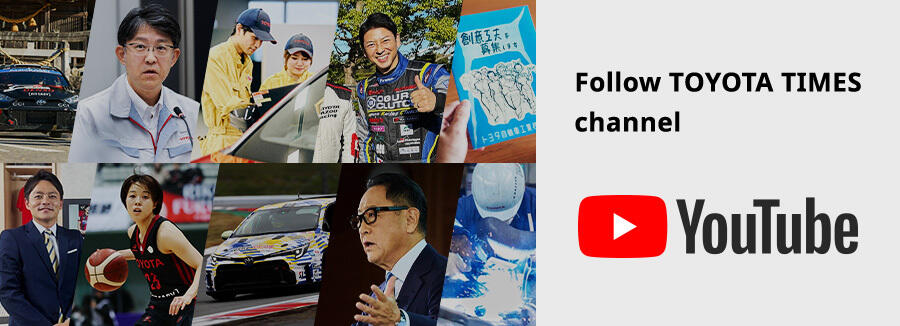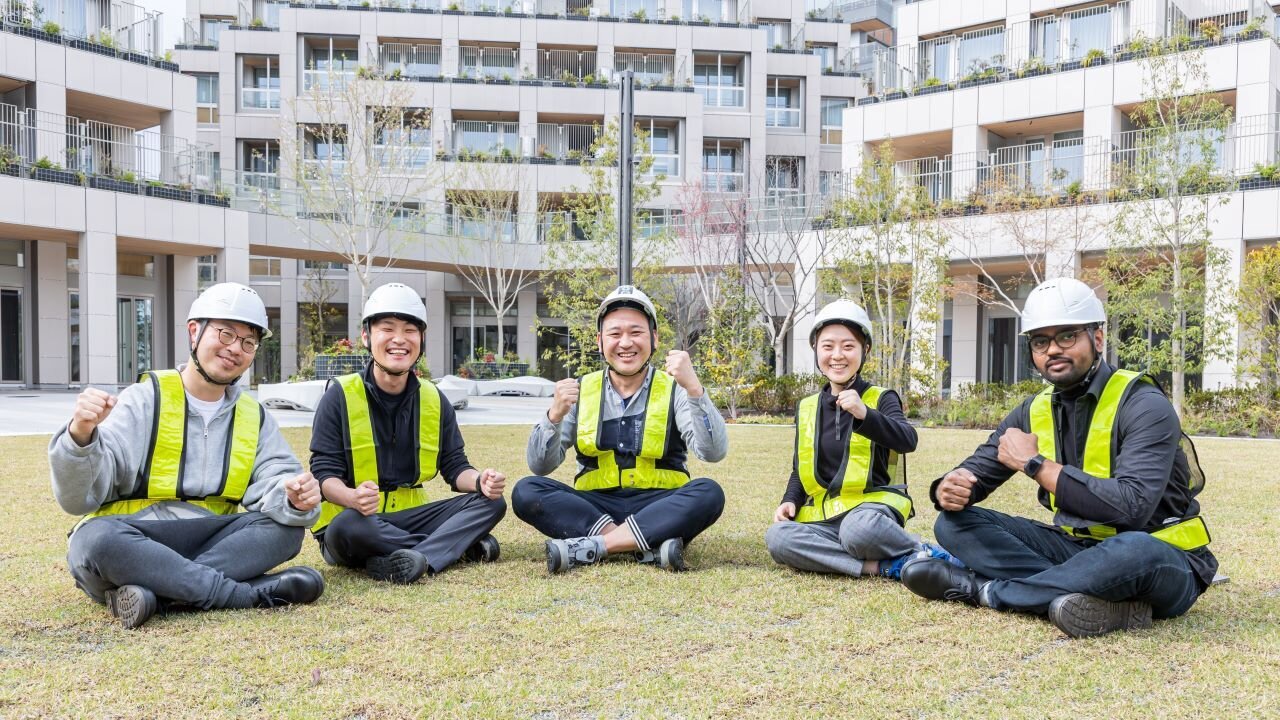
With Phase 1 construction complete, Toyota's "living laboratory" is finally ready to welcome Inventors and residents. We spoke with the engineers laying the groundwork for the city's various demonstration trials.

In February, Chairman Akio Toyoda attended a completion ceremony for Phase 1 of Woven City in Susono, Shizuoka Prefecture, where the city’s skyline is starting to take shape.
This first area will host many Inventors, from the Toyota Group and beyond, along with residents and visitors. Together, they will trial various technologies in a real-life environment, seeking to solve social issues and create value*.
*At the official launch scheduled for the fall of 2025 or shortly thereafter, Woven City is set to welcome approximately 100 residents, primarily Toyota/Woven by Toyota (WbyT) employees and their families. From there, access will expand to outside Inventors and other groups, with some 360 people ultimately expected to live in the Phase 1 area.
This city-sized test course for new products and services has a team dedicated to helping Inventors safely trial their creations.
We spoke with the Woven by Toyota (WbyT) engineers who are developing the various systems that will underpin these demonstrations .
Getting access right
To begin, take a look at this video.
The entry gate, though similar to those found in offices and other facilities, is currently being developed by WbyT. As various demonstration trials are being conducted at Woven City, these gates will improve safety by providing access only to those who register in advance via a dedicated app.
Where this gate differs from a standard office setup is its facial recognition system, which allows seamless entry even for children and wheelchair users. WbyT has worked with the manufacturer to fine-tune aspects such as the gate’s width and the height of built-in cameras. The design anticipates the diverse groups of people who will live in the area.
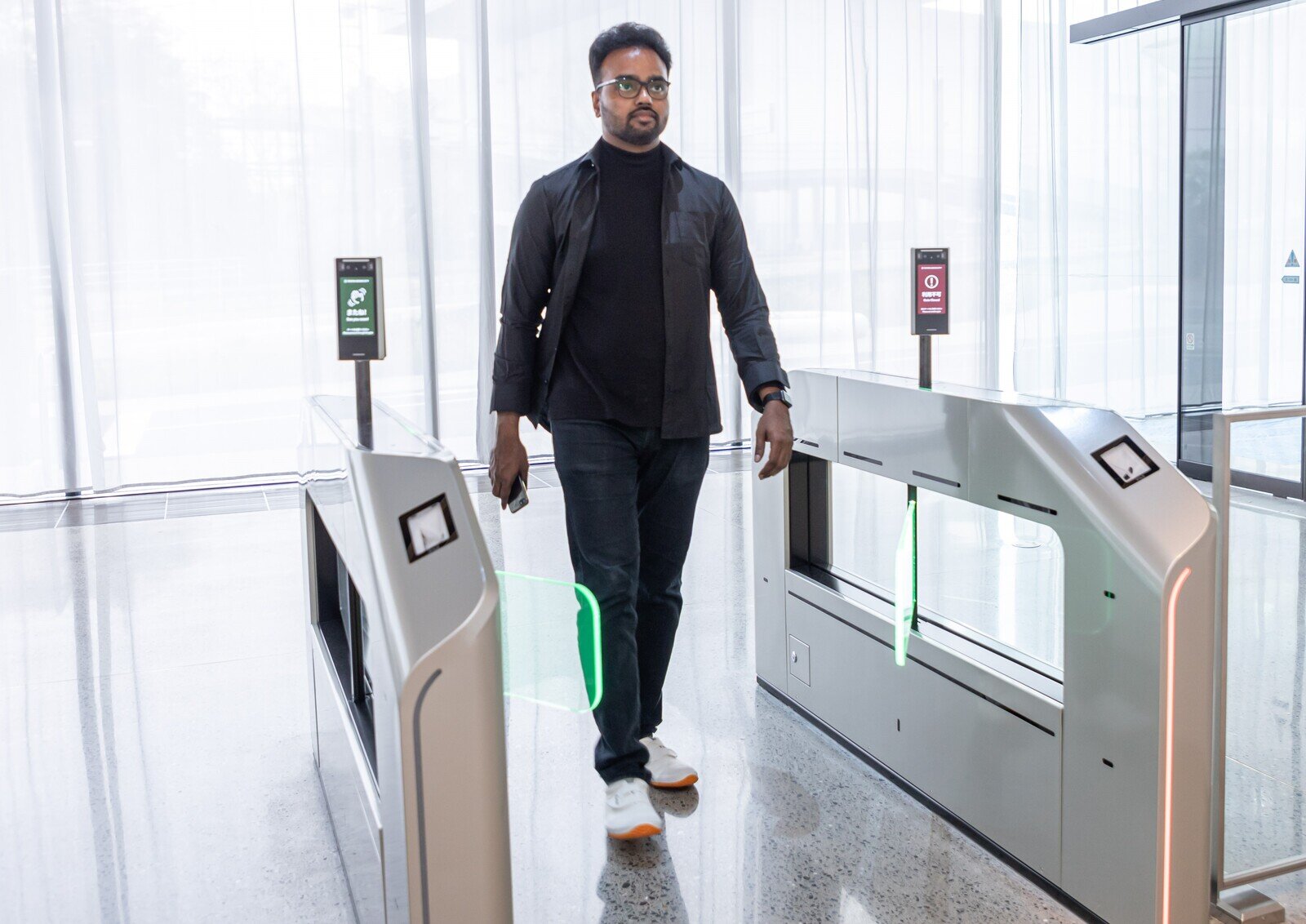
For readers planning a first trip to Woven City, you will also need to register your facial image and the date of your visit via the dedicated app, and familiarize yourself with the city’s traffic rules.
While this process may sound like a hassle, it makes for a safer experience by informing newcomers about the kinds of mobility and technologies being tested. To ensure safety for Inventors and visitors alike, it is important that only those who need to access particular places are able to do so.
Developing this visitor registration system is the work of Bharath Balakrishnan, who goes by “B2” among his WbyT colleagues. We also borrow his nickname for this article.
He says that setting up entry conditions was a challenge.
B2
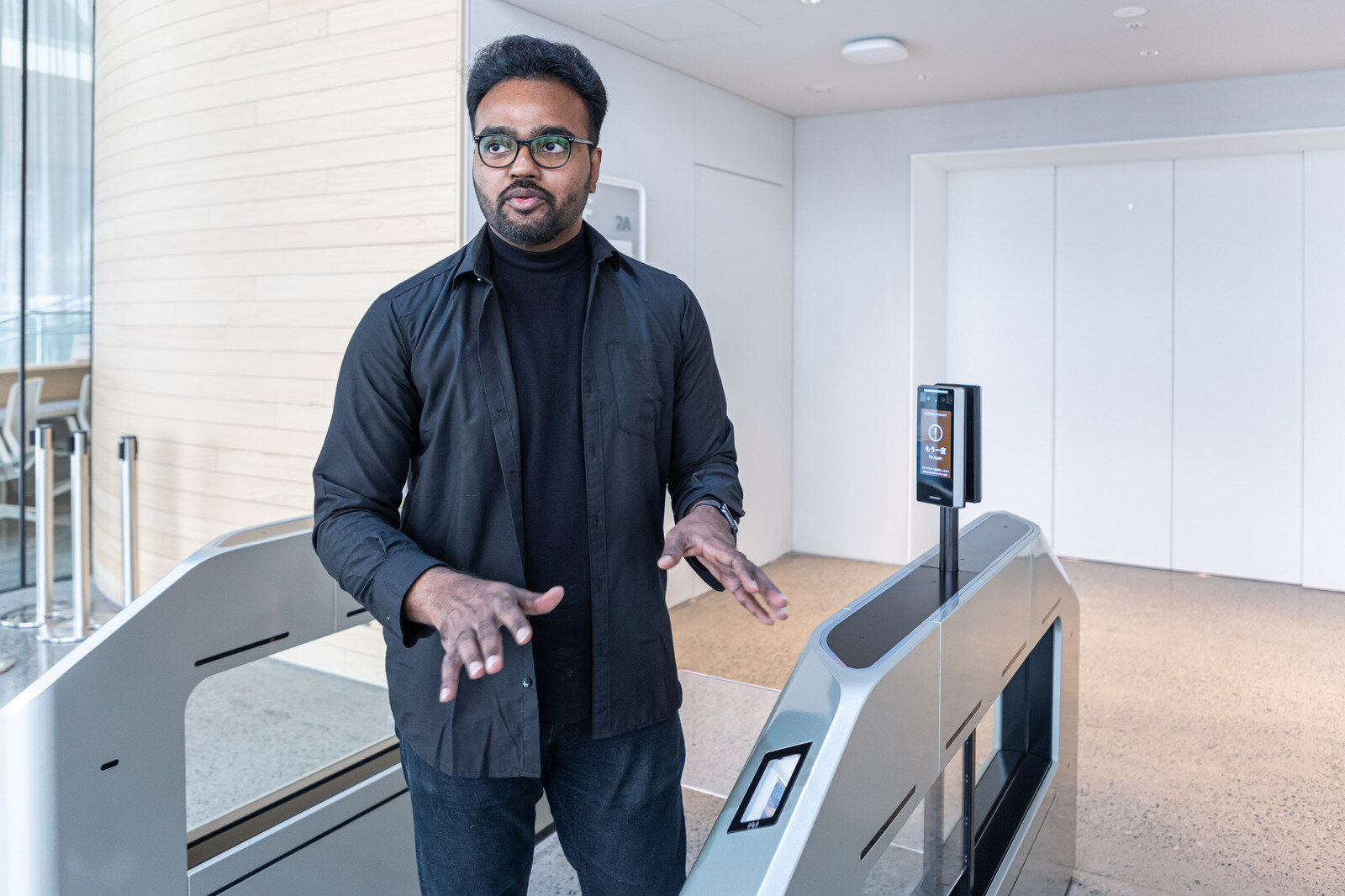
In Woven City, we needed to determine which areas are open to each individual.
We started by setting up rules. For example, some visitors may be able to enter offices, but they cannot go into buildings where residents live.
In a regular office building, you only receive particular types of visitors, but Woven City is both a residential area and a test course for mobility, which means all kinds of people will come there . Are they an outside visitor or a resident, a member of the city’s support staff or a WbyT employee? We defined entry conditions by putting people into such categories.
The team had initially considered entrusting system development to a third party vendor . However, given factors such as data acquisition and the need to coordinate with other Woven City systems in the future, the team decided to implement development develop entirely in-house at WbyT.
In Woven City, mobility is not only about the movement of people and goods, but also information. By using information obtained through visitor registration, B2 and his development team are looking to expand the system to include bookings for e-Palettes and various facilities within Woven City.
“The ultimate dream is to be able to say, ‘I want to go to Woven City on this day, at this time,’ and with that single piece of information, the system automatically takes care of booking your entry, facilities, and e-Palettes,” B2 told us. “That would make visiting here very smooth and allow people to connect with Woven City.”
No more waiting at the lights?
Once safely through the gates and inside the city, you can expect to see something like this:
Watching the video, it may seem as though the traffic lights on the vehicle's side turned green just as the e-Palette reached it . In fact, that is no coincidence.
As they drive, the e-Palettes in Woven City constantly send information about their location and speed to a cloud-based “green light request server” developed by WbyT. Based on this data, the server calculates when the e-Palette will approach an intersection and sends a request for the traffic lights to turn green. Unlike in conventional systems, which detect vehicles with sensors installed in front of the lights, sending a request ahead of time allows the e-Palette to pass through without stopping.
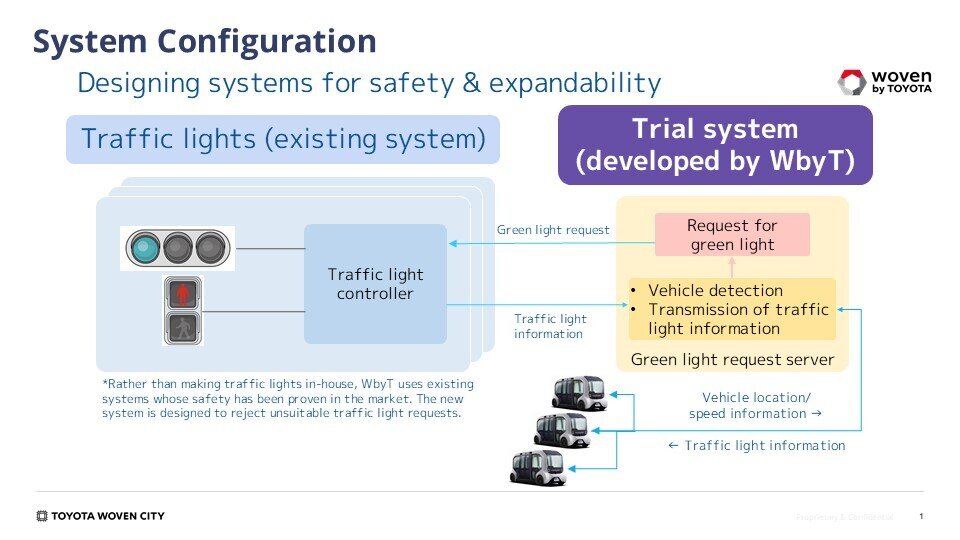
In the Phase 1 area, traffic lights equipped with this system have been installed in seven locations.
As of April, the pedestrian lights at the four intersections within Woven City were always green by default, turning red only when vehicles passed. Whether walking or riding in an e-Palette, everyone can move around safely and comfortably.
Chairman Toyoda previously explained Woven City in this way:
“Woven City is a place for testing a three-pronged approach to safety, encompassing roads and people as well as cars.”
The traffic light system is one way of building safety into road infrastructure. Since the entire city is a test course, it is possible to leverage traffic lights and intersections to run various demonstration trials that would be difficult to conduct in typical urban areas. Both autonomous driving and the underlying signal systems will be tested and enhanced on the streets of Woven City.
Moving forward, WbyT plans to share ideas with the city’s Inventors to establish and test traffic rules tailored to this system.
Yuichi Takahashi is part of the team developing the traffic light system. He looks forward to working with the many people that Woven City will bring together, setting his sights on a future with zero traffic accident casualties.
Takahashi
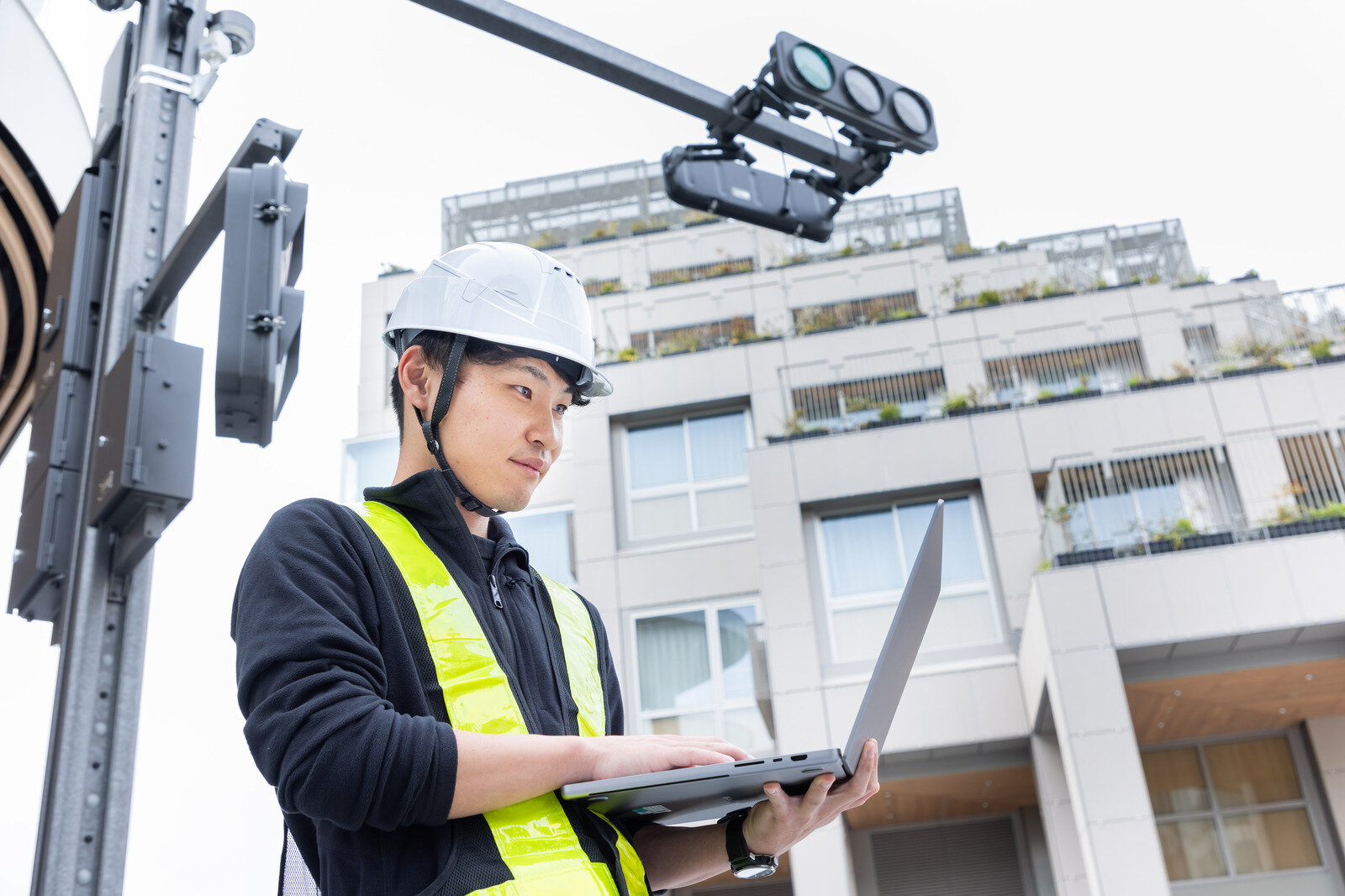
I would be thrilled to meet other people who are inspired to create the ultimate traffic control system for autonomous vehicles.
It would be great fun to assemble 10 or 20 people from different countries, to put our heads together and tackle the challenge of reaching zero traffic casualties by making our roads safer. I’m sure that other members would be excited to get involved.

